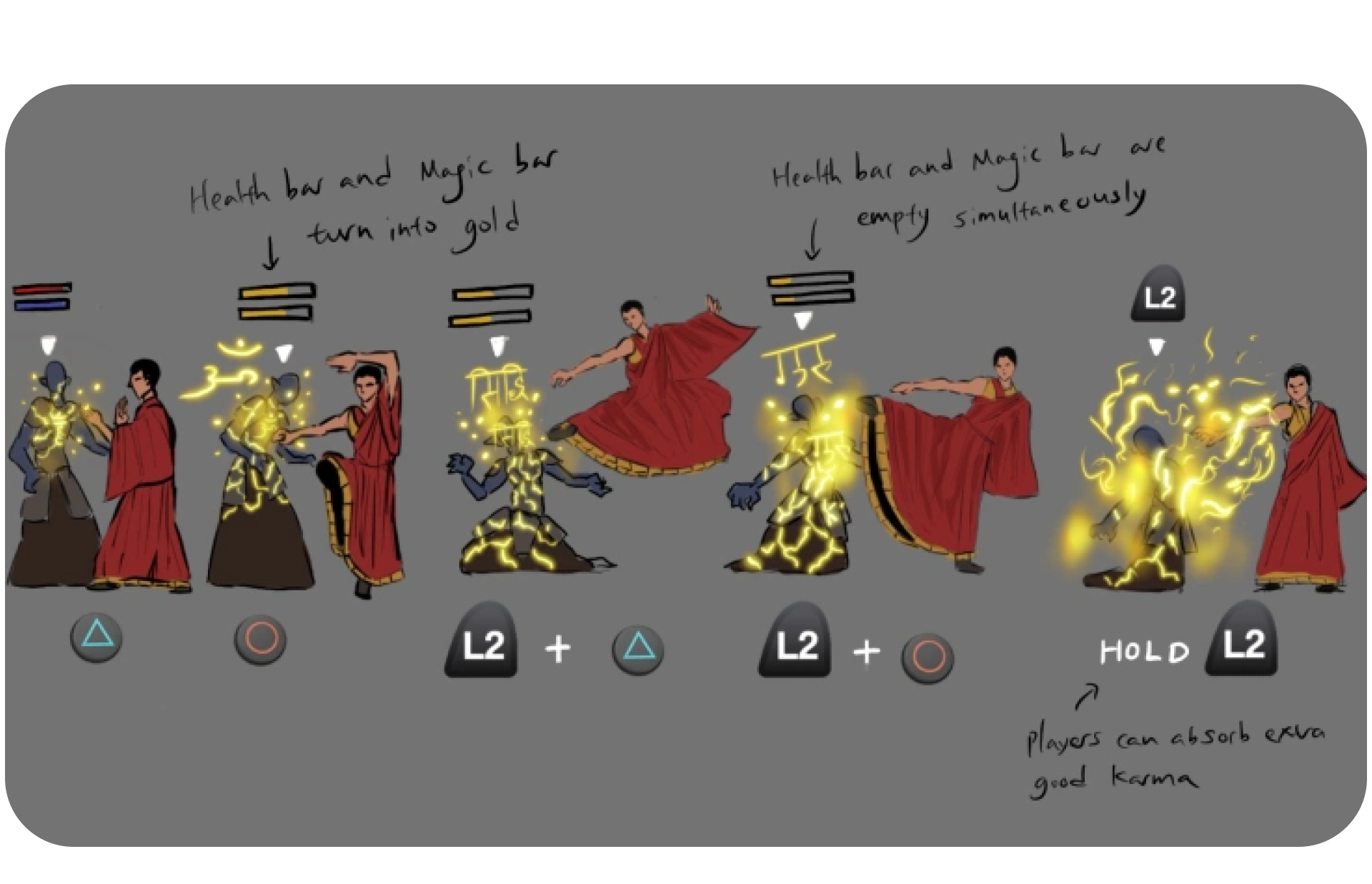
PROJECT
Summary
Edge of Samsara is my year two project for BA Games Design & Art from the University of Southampton.
The goal was to create a professional game design document showcasing the game's concepts and core mechanics and hand it to other people to make small playable prototypes.
Role: Game Designer, Narrative Designer
Duration: 3 months
Tools: Game Design Document, Excel, Sibelius 7, Photoshop, Procreate
Problem:
1. The player assumes the role of a monk, but rather than relying on physical combat, they employ chants to vanquish demons, which is a difficult part to show in the game.
2. Given that Buddhism emphasizes peace in the world, it can be challenging to convey this theme effectively in a game featuring violent combat.
3. As the player embodies the character of a monk, how can we differentiate between actions that are deemed 'good' or 'bad'?
Solution:
1. A novel gameplay mechanic has been introduced to encourage players to employ 'chants' while engaging in combat.
2. In order to progress in the game, players must reclaim territories from demons and also participate in the rebuilding process. This aspect of gameplay emphasizes the importance of promoting peace.
3. A karma bar will monitor players' actions, with the aim of fulfilling 'good' karma to trigger the game's conclusion.
To have the feeling of overcoming demons from an unbalanced environment.
EXPERIENCE
Players are playing as a Tibetan monk, Lhalung Palgyi Dorje, to overcome personal demons in ancient Tibet (historical fiction).
The map covers the east part of Tibet: Ningma, Kham and Amdo. The game will have multiple landforms, including mountains, forests, prairies, lakes and snow areas. Different region has different temperature and weather system.
The game has five main mechanics, and the Karma system is the core mechanic. It forms the foundation for the other mechanics and helps them to link to each other.
This idea came from the theory of Samsara: The more good karma you get, the better realm you will achieve after losing your physical form.
However, I made the Karma system into numerical value instead to separate my game from those choice-based games (Good karma gives players good endings, bad karma gives players bad ends).
GAMEPLAY
For more details about the gameplay mechanics & systems please see here:
From the prairies to the mountain, village to city, sunny to snowing, dogs to yaks, the game provides a lively world for players to experience. The game world is historical fiction; therefore, players will be able to learn and understand deeply about ancient Tibetan culture. Various landmarks are based on an actual map from 838 A.D. to 842 A.D., which provides beautiful, realistic and mysterious environments for players to explore.
CONCEPTS
For more details about the game concepts please see here:
UNIQUE SELLING POINT
There is a lack of open-world games set in ancient Eastern countries, which allows me to introduce an Eastern culture through my game.
The game world provides players a semi-realistic environment, with creatures that only exist in Tibetan mysteries. Players will discover the hidden secrets and use the power of Buddhism to redeem extreme situations.
Five mechanics in the game are tight to create a highly completed open world system, which lets players intensely experience conflicts between humans and demons, the royal house and religions, Buddhism and Bon.




